The Holburne Museum has taken an unpromising sounding topic – Joseph Wright of Derby’s brief and unsuccessful stay in Bath – and produced an exhibition that casts new light on his wider career. All we need now is a more ambitious retrospective of this neglected artist.
Joseph Wright is an artist who has become defined by his provinciality, saddled with the epithet ‘of Derby’ during his lifetime, in order to distinguish him from another painter of the same name. The subject of the current show invites comparison with the only other recent exhibition of this artist in the UK, the Walker Art Gallery’s ‘Joseph Wright of Derby in Liverpool’ in 2007–8.
The Holburne has brought together a superb show that exceeds any limitations of scale or scope. ‘Bath and Beyond’ is an apposite description, because the exhibition looks back to Wright’s earlier career, and forward to the more contemplative works of his later years. Based on new research, the exhibition reassesses Wright’s later career, with the Bath period identified as a turning-point. It also offers important new perspectives on the artistic milieu of the town, a place of leisure, pleasure and cultural consumption.
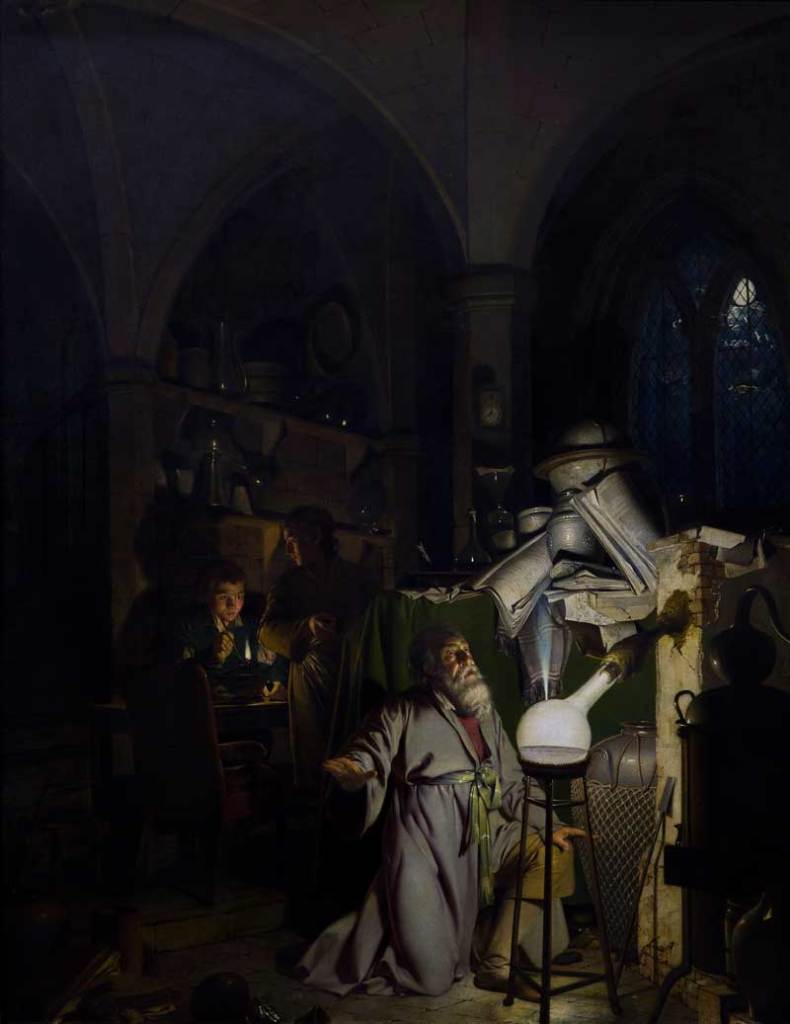
The Alchymist, in Search of the Philosopher’s Stone, discovers Phosphorus, and prays for the successful Conclusion of his Operation, as was the Custom of the Ancient Chymical Astrologers (exhibited 1771, reworked and dated 1795), Joseph Wright. Photograph by Richard Tailby for Derby Museums
When Wright arrived in Bath in 1775 he was in his forties and already an established artist. He had made a name for himself with the distinctive ‘candlelights’ he exhibited at the Society of Artists in the second half of the 1760s. Works such as The Orrery (Derby Museums) and Experiment with an Air Pump (National Gallery), are bravura exercises in chiaroscuro and striking light effects, and justifiably regarded as his masterpieces.
The Holburne exhibition starts with a late work in this series, The Alchymist in Search of the Philosopher’s Stone. Although this dates from 1771, before Wright’s arrival in Bath, it would have been one of the highlights of the studio exhibition at his new home in Brock Street. An imaginary historical scene, full of gothic detail, the painting nevertheless depicts the discovery of phosphorus, which would have appealed to popular interest in new scientific discoveries.
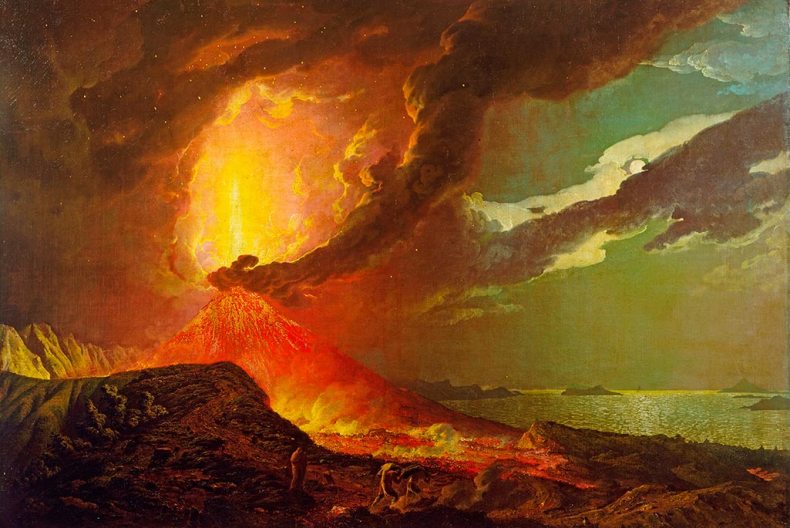
Vesuvius in Eruption, with a View over the Islands in the Bay of Naples (c. 1776–80) © Tate, London 2013
Wright arrived in Bath having recently returned from a tour of Italy. The purpose of his journey had been professional development: to study classical antiquity and Renaissance art. But for all the cultural authority invested in the art of the past, it was novelty and spectacle that Bath society craved. Wright satisfied these tastes with a pair of sensational nocturnal scenes: Girandola, a depiction of a spectacular firework display in Rome, and Vesuvius in Eruption. His mastery of light and shade, used to such great effect in his candlelit paintings, was now elevated to a Sublime scale.
Vesuvius in Eruption captured Bath’s attention, presenting a vision of natural wonder beyond anything the exhibition-going public would have experienced. Wright reported: ‘As to the picture of Vesuvius, the Town rings with commendations of it…’
Popular acclaim did not necessarily translate to commercial success, however. Wright had gone to Bath to establish himself as a portrait painter in the fashionable spa town, attempting to fill the shoes of Thomas Gainsborough, who had recently departed for London. Whether it was Wright’s awkward personality, or a lack of business acumen, he failed in this venture, and re-located to Derby after only a year and a half.
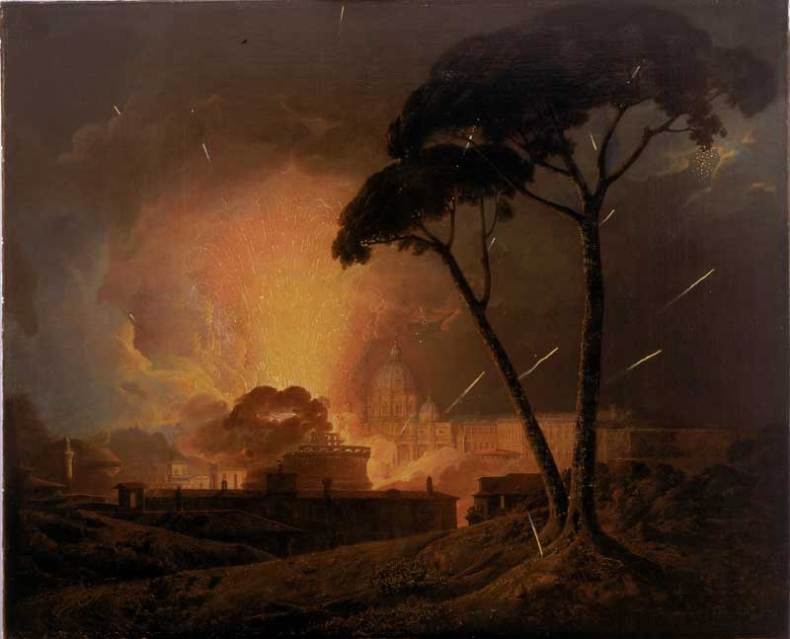
The Annual Girandola at the Castel Sant’Angelo, Rome, Joseph Wright. Courtesy National Museums Liverpool
However, amongst the portraits he did produce in Bath is one of the highlights of the current exhibition: a full-length of John Milnes borrowed from the Louvre. Milnes was one of Wright’s most important patrons and he is depicted here as an elegant country gentleman, exquisitely turned out in pale cream and blue, and standing in front of a spreading oak tree.
The painting is a tour de force of Wright’s painterly skill. The figure of Milnes is carefully rendered in smooth gradations of colour and tone, with a characteristic attention to observed detail. The treatment of the tree, on the other hand, has a tactile quality achieved through a heavily worked paint surface and thick impasto. This fastidious ‘finishing’ of the background became a distinctive quality of Wright’s technique, but was laborious and unsuited to a portrait market that demanded speedy completion of commissions.
The Holburne achieves much within the restricted scope of the subject of the exhibition, but there is a larger story to be told here. We are long overdue a retrospective of Wright’s career – the last one was at the Tate in 1990. However, Derby Museum and Art Gallery, which holds the most extensive collection of his works, is planning something on this scale in the near future.
‘Joseph Wright of Derby: Bath and Beyond’ is at the Holburne Museum from 25 January–5 May.
Related Articles
First Look: Joseph Wright of Derby
All Change at the Ashmolean Museum (Maggie Gray)
Unlimited access from just $16 every 3 months
Subscribe to get unlimited and exclusive access to the top art stories, interviews and exhibition reviews.

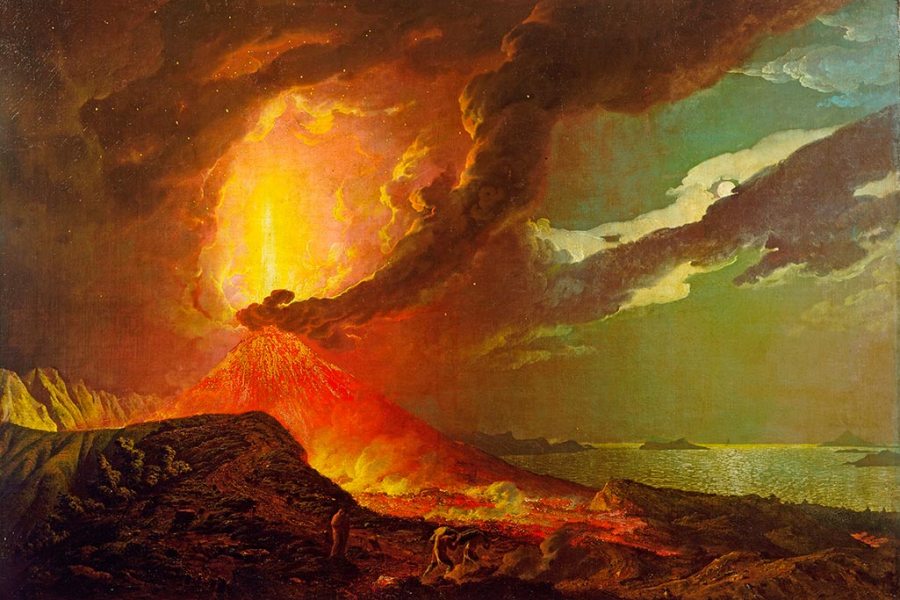

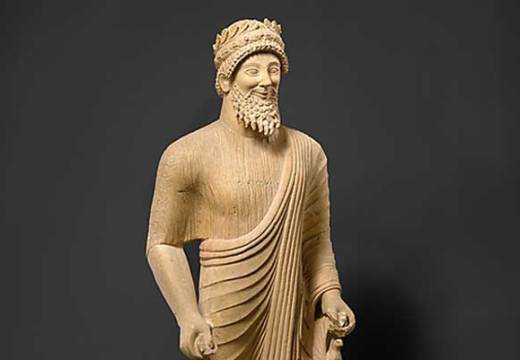
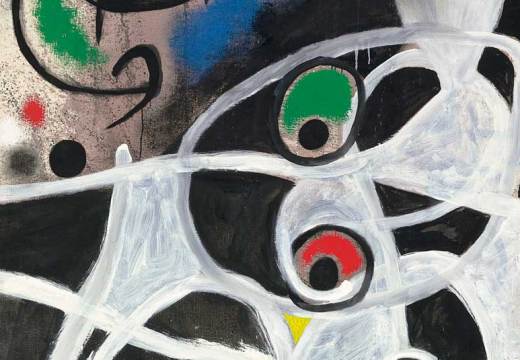









![Masterpiece [Re]discovery 2022. Photo: Ben Fisher Photography, courtesy of Masterpiece London](http://www.apollo-magazine.com/wp-content/uploads/2022/07/MPL2022_4263.jpg)
It’s time for the government of London to return to its rightful home